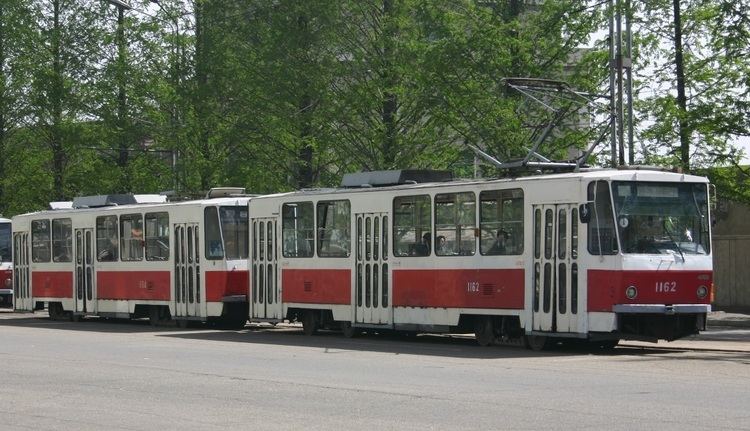Number of lines 4 Character at-grade | Transit type Tram Began operation 1991 | |
 | ||
Operator(s) Transport and Communication Commission | ||
Pyongyang Tram is a tram system in Pyongyang, capital of North Korea.
Contents
Overview
In the pre-war era, there were three tramways in Korea, in Seoul, Busan, and Pyongyang. However, the system in Pyongyang was discontinued after the Korean War of 1950 to 1953. Those in Seoul and Busan survived the war, but were discontinued when motor cars became more common in South Korea in 1968, leaving no tramways on the peninsula.
Unlike South Korea, personal ownership of automobiles in Pyongyang is very rare. North Koreans rely mainly on public transport. As oil imported into the country is mostly allocated to its military, Pyongyang has electrically powered trolleybuses (Pyongyang trolleybus system) and subways (Pyongyang Metro) as its main public transport. However, as trolleybus lines became overcrowded, the city decided to build tram lines. The first line opened in 1991.
In the late 1990s, the city had frequent power outages due to decrepit power stations and the lack of resources. The tram lines also suffered from outages, but the situation has improved in recent years. In 2003, however, the section of Line 1 between P'yŏngyang-yŏk and Songsin was closed, as the bridge over Taedong River started to decay.
Foreign tourists were previously not permitted to ride the tram lines, but some recent tours have started to include tramway rides.
In 2008, the City Transportation Company of Prague sold 20 used T3s to Pyongyang Public Transportation Enterprise together with a shipment of tram-rails. These trams were made in the late 1970s and the early 1980s. According to Ondřej Pečený, a spokesman for the City Transportation Company of Prague, these trams are in very good condition, and can run for at least two years without the need of a service. The tram cars were made by Tatra, a Czechoslovak company, during that nation's socialist era. Various types are used, but there are currently no low-floor tram cars.
North Korea also has a tramway in Chongjin, which opened in 1999.
Lines
There are currently three lines in operation.
The first digit of the tramcars' serial numbers indicates the line (route). The digit-on-a-plastic-plate that is hung in the window of a tramcar indicates that the tram only stops at same-numbered stops. As of 2006, the fare is ₩ 5 for any section. There are also coupon tickets (시내 차표; 市內車票; sinae ch'ap'yo).
Kŭmsusan Line
There is another tramway used to take visitors to the Kumsusan Memorial Palace, where late President Kim Il-sung lies in state. The line is completely different from other lines in Pyongyang, and not connected to any of them. The line is free of charge. This tram line uses 1,000 mm (3 ft 3 3⁄8 in) rail gauge, unlike others with 4 ft 8 1⁄2 in (1,435 mm) rail gauge. The tram cars for this line were made in Switzerland.
